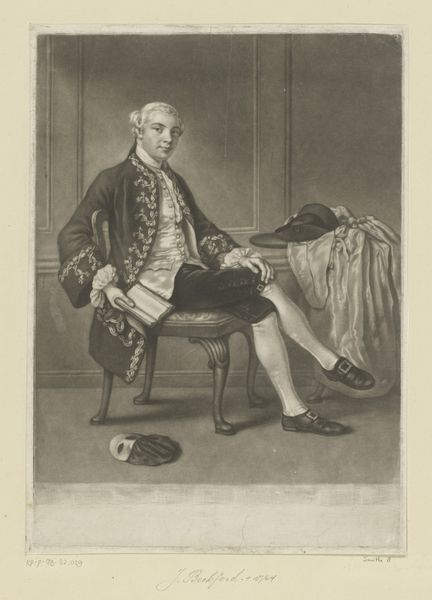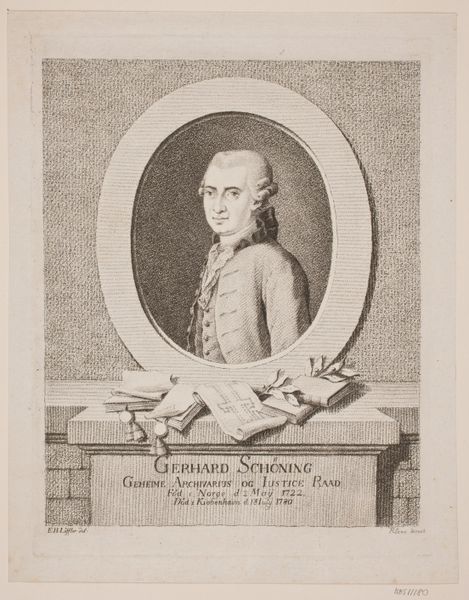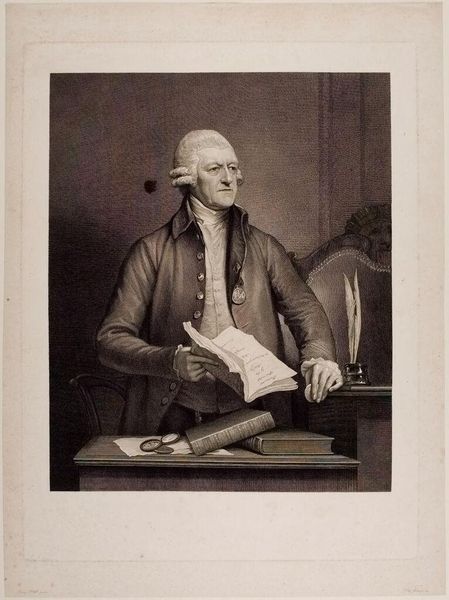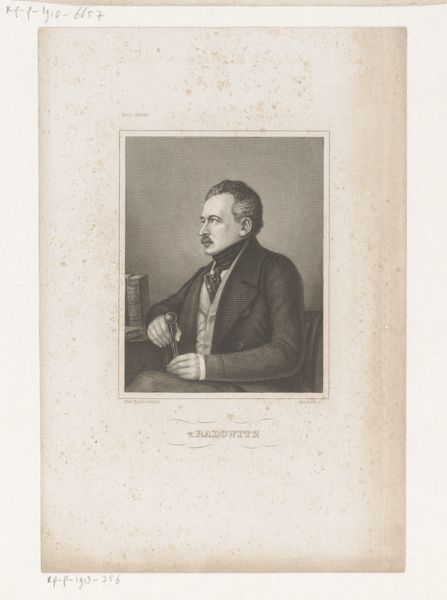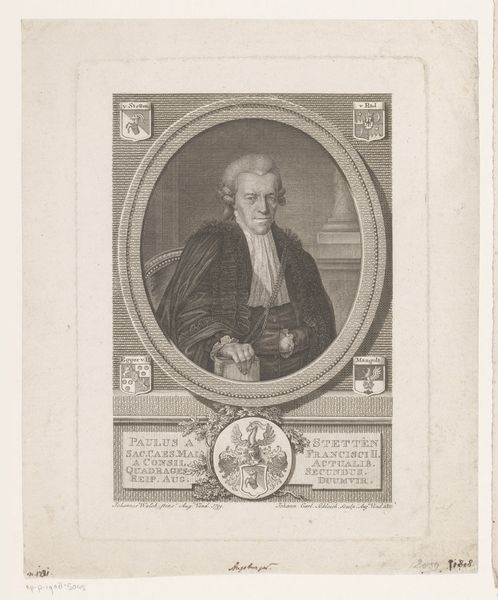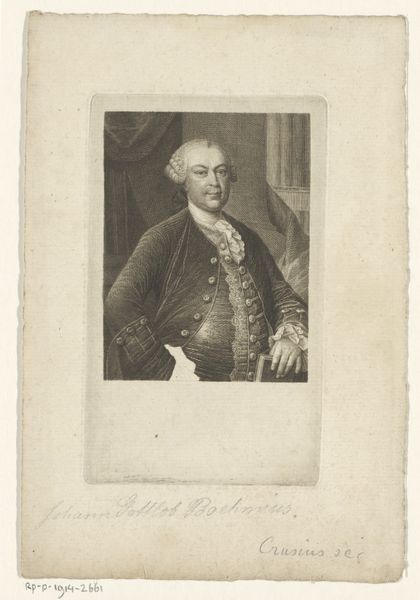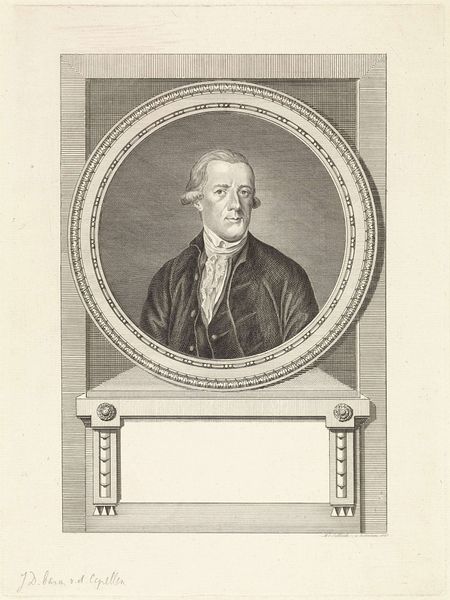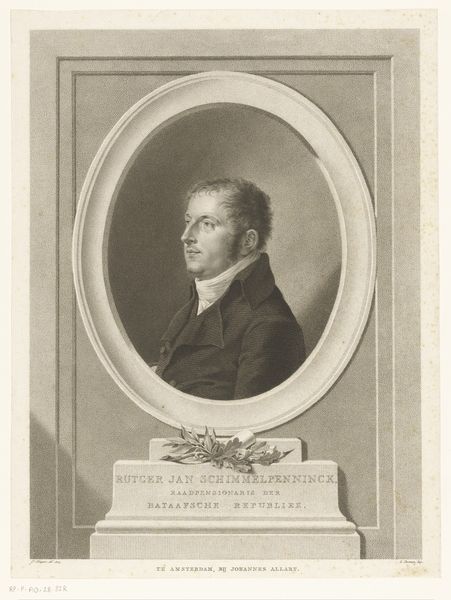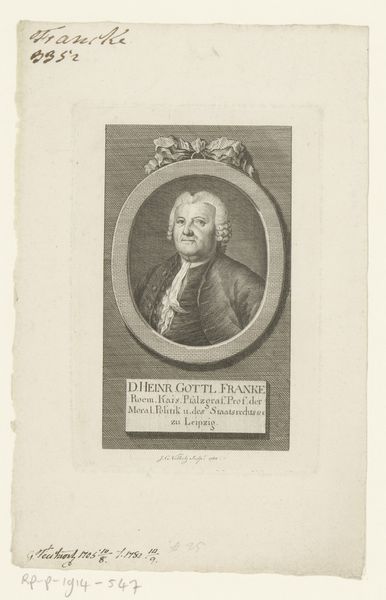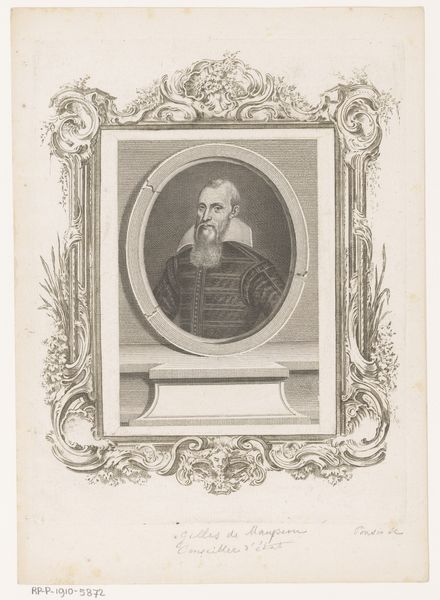
drawing, print, etching
#
portrait
#
drawing
#
neoclacissism
# print
#
etching
Dimensions: Sheet (trimmed): 17 1/8 × 11 7/8 in. (43.5 × 30.2 cm)
Copyright: Public Domain
Curator: Here we see an etching, "Henry William Bunbury Drawing his 'Long Minuet,'" completed around 1789 by Thomas Ryder I after a design by Bunbury. Editor: Immediately striking is the artist's self-awareness. He's portraying himself, not just as an artist, but performing the very act of creation! There's a self-reflective element here that piques my interest. Curator: Absolutely. This image speaks volumes about the rising status of the artist in the late 18th century. Bunbury places himself within a Neoclassical setting with the fluted column, referencing classical ideals, imbuing himself with intellect and cultivation. The image becomes a commentary on artistic identity. Editor: And what's he drawing? We see a procession of comical, caricatured figures, a parade of the elites perhaps, reminiscent of Hogarthian satire. Is he critiquing the very society that elevates artists like himself? I see conflicting messages here. Curator: Precisely. This reveals a tension inherent in late 18th-century British society. He’s profiting from commissions from that class while subtly satirizing their pretensions. He cleverly exploits the print medium allowing a wider circulation of his social critique while benefiting from its commerce. Editor: This portrait is indeed full of clever juxtapositions. He places himself as a respectable gentleman and biting satirist within an aristocratic society that both nurtures and perhaps stifles him. The work then becomes a comment about art, patronage, and the subtle class struggle of his day. Curator: Precisely! And Bunbury uses printmaking to subvert conventional social structures. He offers witty commentaries through readily available etchings, enabling engagement from many different voices within his own historical moment. Editor: Thinking about this piece, I see it as a call to question our roles within prevailing societal structures and whether the ability to critique that system comes with its own entanglements. It remains an engaging piece because of its self-awareness, wit, and continued relevance. Curator: Indeed. Art, even in its creation, can spark dialogue, prompt self-reflection, and urge social discourse. That this little drawing still accomplishes this feat some centuries later is a reminder of the continuing power of images.
Comments
No comments
Be the first to comment and join the conversation on the ultimate creative platform.


